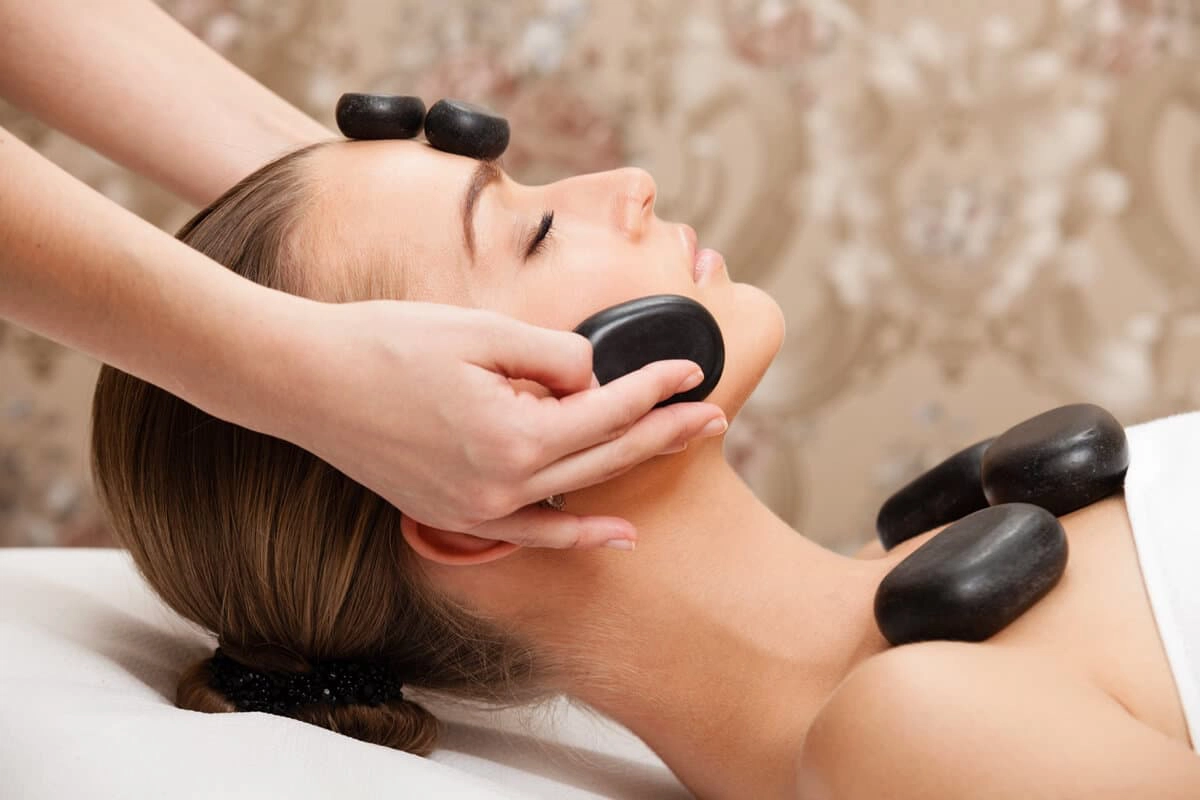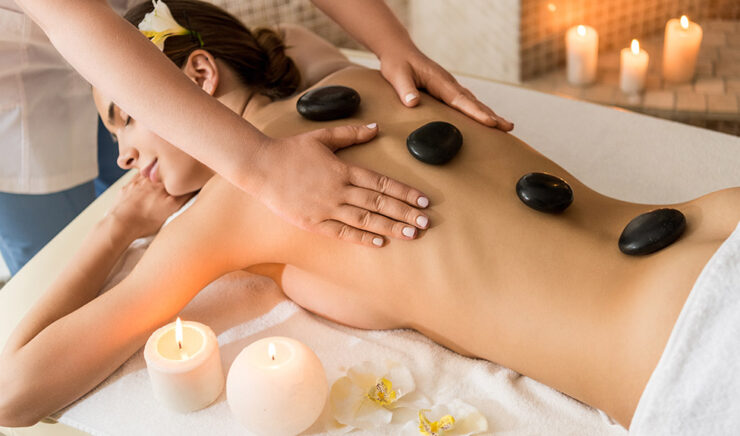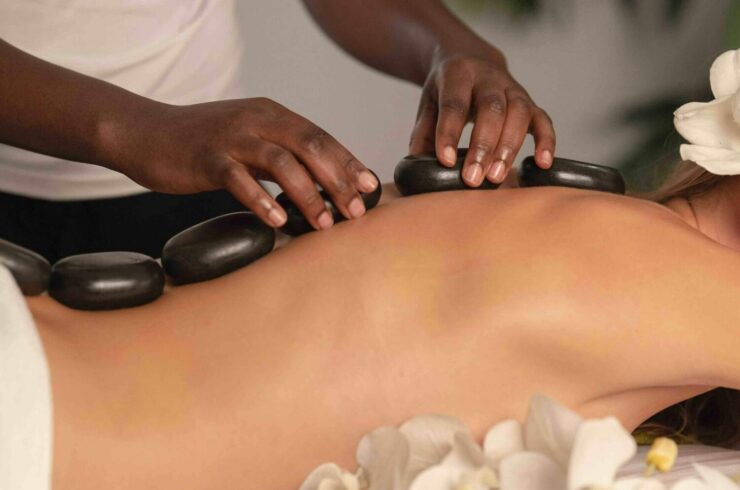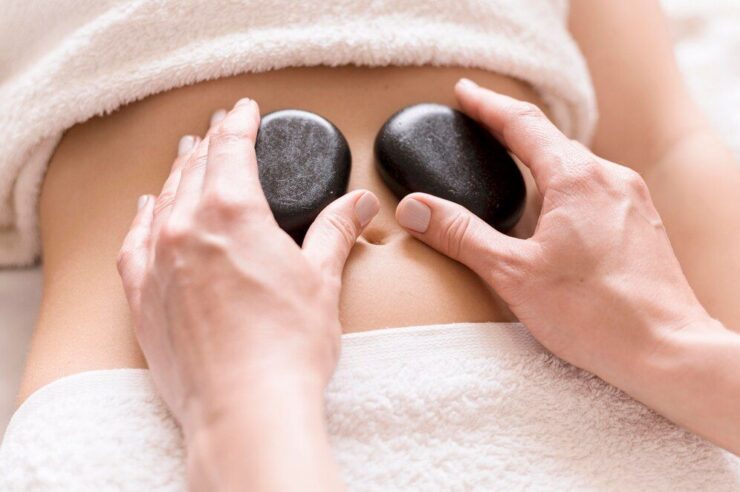Stone therapy is a practice originating from ancient China. This type of massage is based on the use of stones heated to the desired temperature. Volcanic rocks, such as basalt, are used during the procedure. The stones are flat and round with a polished surface, although rough stones are occasionally used for additional skin cleansing.
Needless to say, stone therapy has gained fame all over the world. Wherever you find yourself, you can most likely find a place for this treatment. Most notably, Armonia.ae invites you to experience the relaxing and healing power of a hot stone massage in Dubai. The experienced staff ensures that the rooms are clean, creating a pleasant relaxing atmosphere and the client’s sensation to avoid the slightest discomfort.
They also use only natural and quality oils, which benefit the skin and the body as a whole due to the effect of aromatherapy. This unique massage therapy will open up a realm of physical and mental well-being for you. If you’re passing through Dubai, be sure to stop by!
How do the stones work?

The heat given off by black stones has a gradual warming effect, which leads to improved blood flow, oxygen, and useful substances to the tissues and organs. They are heated in special equipment to an optimal temperature of +45-55ºC.
White stones are used when it is necessary to relieve pain and inflammatory processes. Their temperature ranges from 0 to +10ºC.
Different types of stones give different effects, so they are selected taking into account the purpose of treatment in each case. Most masters use:
- Basalt (an igneous rock of gray or black color). Excellent heat retention, so it is used for hot treatments. Large and medium-sized stones are used to work on the back, legs and abdomen, while small stones are excellent for toes.
- Jade, white marble, slate. They slow to warm up from body temperature, making them the best option for cold stone therapy.
- Amber, agate, malachite, amethyst, topaz, aventurine. They belong to the category of semi-precious stones that serve as energy conductors. In China, it is believed that they can be used to influence the mental currents of a person, attracting prosperity in the desired area of life.
Benefits of stone therapy
The correct application of the massage technique gives a complex result, which is expressed in a whole list of beneficial effects, such as:
- relief of swelling;
- improvement of blood circulation;
- acceleration of lymph flow and metabolic processes;
- elimination of headaches or reduction of their intensity;
- skin rejuvenation (smoothing wrinkles, skin breakdowns);
- relaxation of spasmed muscles and removal of clamps;
- improvement of the general psycho-emotional state;
- stimulation of natural production of elastin and collagen fibers;
- removal of harmful substances from the body;
- reducing the appearance of cellulite;
- strengthening of the immune system;
- improved well-being;
- cleansing of the skin pores.
An important factor in stone therapy is the ambiance of the room. The master is sure to create a calming and relaxing atmosphere with dimmed light and relaxing music. Often aromatherapy practice is also added so that the person quickly adjusts to the procedure and gets the most positive effect from it.
Medical effect

From a medical point of view, stone therapy can be seen as a variant of thermotherapy. The latter is based on the principle of temperature sensitivity, i.e. the human ability to perceive heat and cold. This process involves the endings of nerve fibers. They register changes in the tissues and transmit the corresponding impulses to the brain.
There are about 25,000 heat receptors and 300,000 thousand cold receptors in the human body. The former are located in the superficial and middle layers of the dermis, the latter in the epidermis. Both species are sensitive exclusively to temperature stimuli and respond to thermal environmental factors. Accordingly, when overheating or hypothermia occurs, the body begins to activate thermoregulatory mechanisms to maintain homeostasis. In this case, a set of biochemical and physiological processes is activated.
The autonomic nervous system is responsible for physical and chemical thermoregulation, controlling blood circulation, lymph flow, endocrine glands, respiratory function, and innervation of smooth muscles of internal organs. This means that exposure of the skin surface to extreme temperatures affects the peripheral and central ANS, and consequently the blood flow, hormonal, respiratory, and immune systems.
Therefore, thermotherapy is recommended for people suffering from:
- insomnia;
- angina pectoris;
- gastric ulcers;
- immune deficiencies;
- chronic fatigue;
- slow lymph flow;
- apathy, stress, depression;
- genitourinary disorders;
- headaches and muscle aches;
- metabolic disorders;
- decreased muscle tone;
- localized fat deposits and cellulite;
- bulimia, anorexia, dystonia;
- age-related changes in the skin of the face and body;
- psycho-emotional and/or physical fatigue.
Stone therapy: hot and cold

Black stones are usually smeared with an essential oil or aromatic liquid before being placed on the body. The treatment expands blood vessels, relaxes muscles and releases clamps, accelerates blood flow and metabolic processes.
Heated stones affect the deep muscle layers, which has a noticeable anesthetic effect and leads to complete relaxation of the body. It is an effective method of fighting insomnia, replacing harmful drugs.
Cold stone therapy is used to strengthen immunity, combat chronic sinusitis and breathing difficulties, and relieve headaches, and pain relief for sprains and other injuries.
Stages of contrast stone therapy
A kind of “introduction” of the procedure involves several approaches (2-5) with hot stones (there can be 1-4 of them) to the treated area. The middle block of the session is the most interesting and technically complex, so it requires special attention and professionalism from the master. It implies simultaneous or alternating exposure to cold and hot stones. There can be 2-6 of them, and the approaches can be 1-6. The conclusion of the procedure depends on the duration and intensity of the previous stage. The masseur resorts to further warming or cooling and manual massage.
Traditionally, stone therapy is done in an upward direction: from the feet to the neck. If the client feels discomfort, the master adjusts or changes the technique.
At the end of the massage is recommended to rest with a cup of green tea. Medics note that this drink can increase the effect of thermotherapy due to the additional acceleration of metabolic processes.

